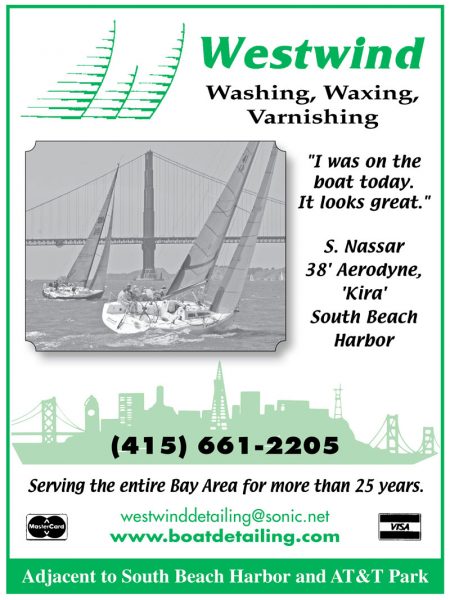
Spindrift 2 Takes Off
French sailor Yann Guichard and the crew of Spindrift 2 set sail on a new Jules Verne Trophy attempt at Ushant today, Wednesday, January 16, at 11h 47min 27sec UTC. “Won’t they be getting into autumn in the Southern Hemisphere?” inquired one head-shaker, contemplating worsening conditions in the Southern Ocean. Not hardly. To win the prize, the Spindrift Racing team will have to recross the line by February 26 at 11h 16m 57sec UTC. The record, held since 2017 by Francis Joyon and his crew, is a mere 40 days 23h 30m 30s, slightly more than half the original challenge inspired by Jules Verne’s novel, Around the World in 80 Days.
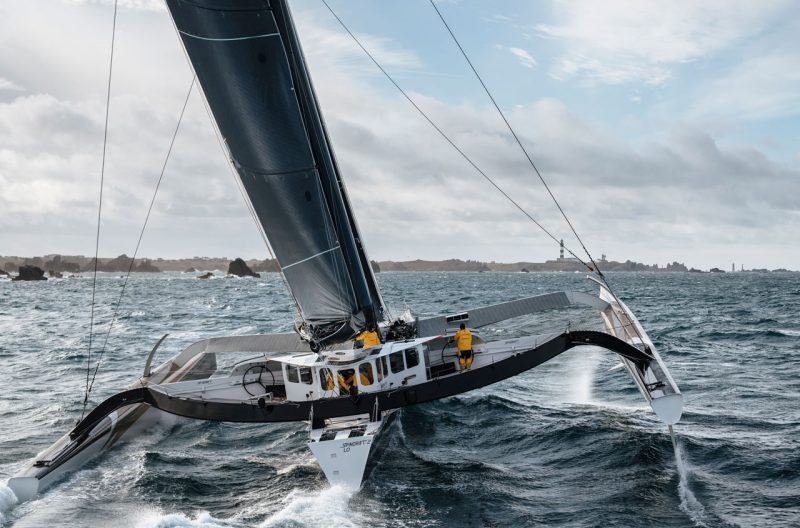
The steed of choice is a 2008 VPLP 131-ft trimaran, formerly called Banque Populaire V. Under that name, Loick Peyron and crew used her to break the Jules Verne record in 2012. Sprindrift Racing has made two previous attempts with her, in 2015-2016, when they completed the circumnavigation but fell short of the record. Then, last January they started but turned back to await a better weather window — and dismasted on their way to the restart.
The weather conditions were favorable this morning at the Créac’h lighthouse. The light marks one end of the start and finish line of the course, which circles the globe via the three Great Capes. A southwesterly breeze of 20 knots and calm seas allowed the maxi-trimaran to head quickly toward a front off Ushant and pick a good system from the northwest. These strong winds should propel Spindrift 2 quickly down to Madeira, the Canaries and the Cape Verde archipelago.
“It looks good up to the equator!” said the 44-year-old skipper. “The trade winds are well established: It should take less than five days.” According to the team’s onshore weather router, Jean-Yves Bernot, the mighty tri could reach the equator during the night of this Sunday to Monday.
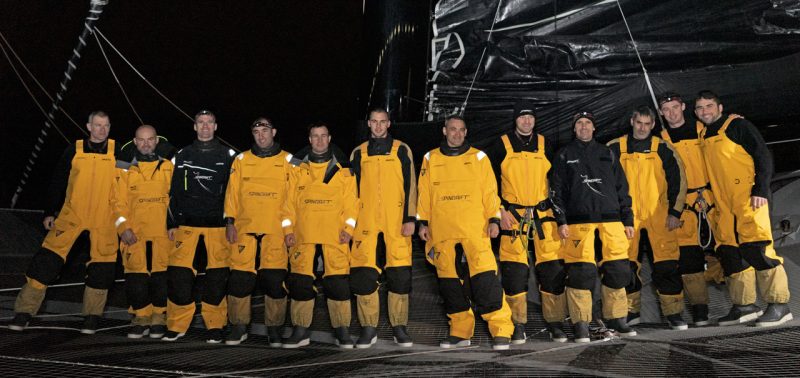
“This world tour is also a passing of the seasons at high speed!” continued Guichard. “We start in the northwest with drizzle, then in the Canaries we will be in the trade winds with 30°C, at the equator it will be 40°C and three days later, we are in the Forties, in the Southern Ocean. We are slightly lighter than the last time, which is why we are only 12 onboard. Below 20 knots we have a very slight speed deficit, but anything above that Spindrift 2 is faster than before! We can keep our average speed above 35 knots, if the sea remains manageable.“ To see who’s on the team (Guichard’s partner Dona Bertarelli is not onboard), and to follow their progress, see www.spindrift-racing.com.
Webb Chiles to Resume Circumnavigation
Over the weekend, we got an email from a certain circumnavigating legend who wrote about himself in the third person. “I am sitting in what I like to call Gannet’s Great Cabin . . .” he wrote.
Webb Chiles, 77, is about to sail from Hilton Head Island, South Carolina, for Panama and San Diego, in Gannet, his ultralight Moore 24, to complete his sixth circumnavigation and her first. Since leaving San Diego in 2014, Gannet’s daily runs total 25,028 miles.

Their intended course to Panama is east of the Bahamas and through the Windward Passage between Cuba and Haiti.
Webb Chiles has never had sponsorship or shore teams. He goes to sea with no radio beyond a handheld VHF with a range of less than 10 miles. He has contempt for crowdfunding of other people’s dreams. Decades ago, he found freedom by choosing to be independently poor. The key word is ‘independent’.
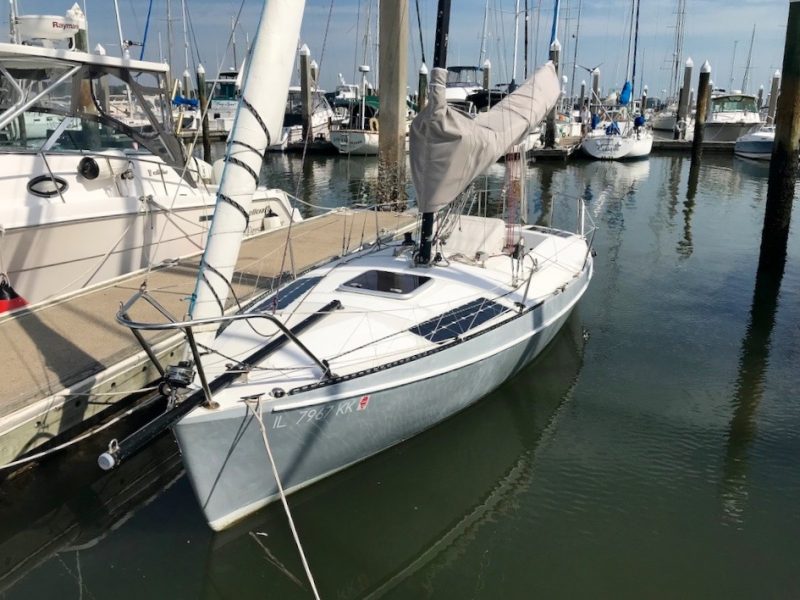
He and Gannet will depart when he sees a GRIB he likes, but no earlier than Wednesday, January 16. Once at sea, he cuts ties to the land completely and receives no outside weather information. He studies the sky, the sea and the barometer, looking for signs of change.
He hopes to reach San Diego in time to be with Carol, his wife, on her birthday in late April.
If you want to follow, Gannet’s Yellowbrick tracking page is: www.my.yb.tl/gannet. His website is: www.inthepresentsea.com. His online journal: www.self-portraitinthepresentseajournal.blogspot.com.
Ad: Westwind Boat Detailing
Sailors Strive to ‘Save Our Working Waterfront’
Over the past few years Alameda residents and sailors have provided input on the redevelopment plans for Alameda Marina. A core issue has been maintaining marine jobs, services and facilities for the boating community. This led to the formation of SAWW (Save Our Working Waterfront). Recently we received word from tireless SAWW volunteer Nancy Hird that one of their key agenda items is a new boatyard to replace Svendsen’s.
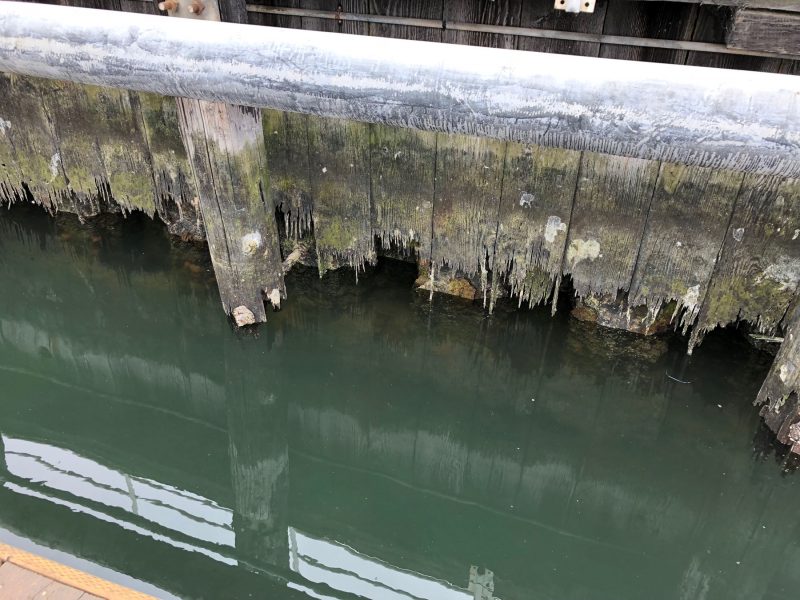
The developer put out the Request for Qualifications/Proposal at the beginning of this year. The link is: https://alamedamarina.com/updates. Hird is asking anyone interested to please forward the RFP to any potential person or organization that may be interested in responding to or distributing the document. “For our work over the past few years to be successful, we must have someone or an organization to create and run a boatyard as the cornerstone of the commercial core at Alameda Marina,” she says. “It is critical to maintain both existing and new businesses and culture as a thriving maritime center in Alameda.
“Please note the deadline to express interest is April 1,” she adds. “This is not a simple document to prepare and will require time and effort to adequately respond, so getting this out in a timely manner is imperative.”
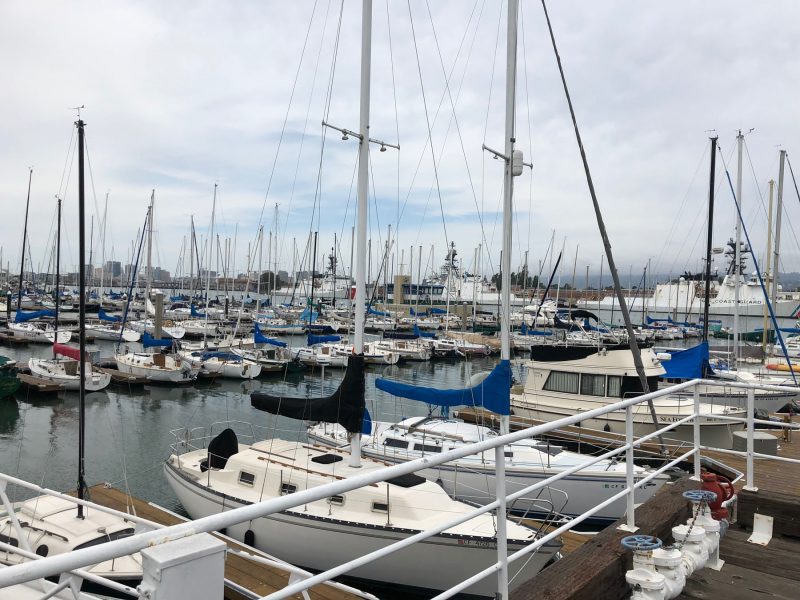
Sailors and SAWW would like to see the continuation of marine services and a boatyard at Alameda Marina.
Richmond Ferry Takes Off
It’s official. Richmond now has ferry service. Again. A previous ferry, run by the private company Red and White, proved economically unfeasible. It fizzled out during the Great Recession. It didn’t help that the boat was slow. San Francisco Bay Ferry, aka WETA, a public agency, runs the new service. A catamaran, Cetus will cover the route to the San Francisco Ferry Building in about 35 minutes. In 2017, Tideline Water Taxi offered a Richmond run; they currently serve Berkeley. Set the Wayback Machine to 1924-1956 and you’ll find a ferry running from Point Richmond to San Rafael before the bridge replaced it.
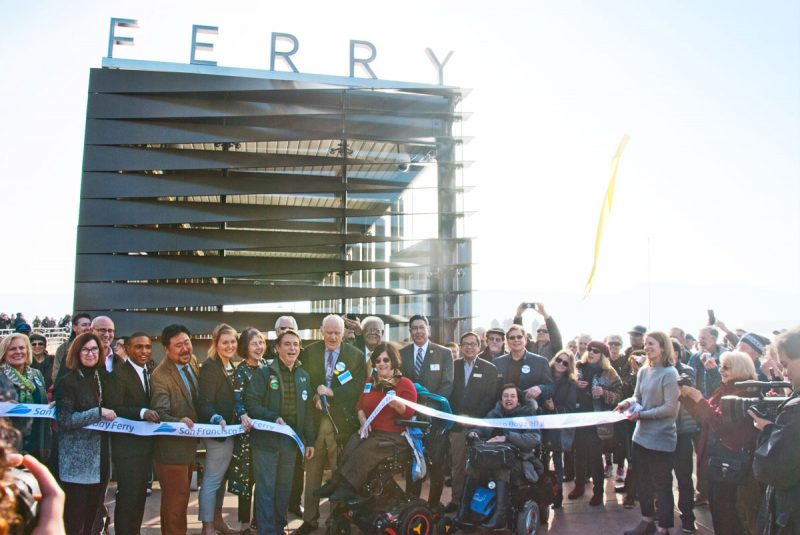
“The ferry will be a significant driver of development in a city that has largely been passed up by the Bay Area’s real estate boom,” said Richmond mayor Tom Butt. Development along the Richmond shoreline is already progressing. While the new homes will help with the Bay Area housing crunch, the size and scope of development could impact the quality of sailing in the region, not to mention traffic.

A plus side for sailors is the location of the ferry terminal at the Craneway Pavilion, the site of the Pacific Sail & Power Boat Show, to be held this year on April 4-7. The terminal is also a short walk to Marina Bay Yacht Harbor and an easy bike ride to Brickyard Cove Marina and Richmond Yacht Club. At this time, the schedule does not include weekend or nighttime service.
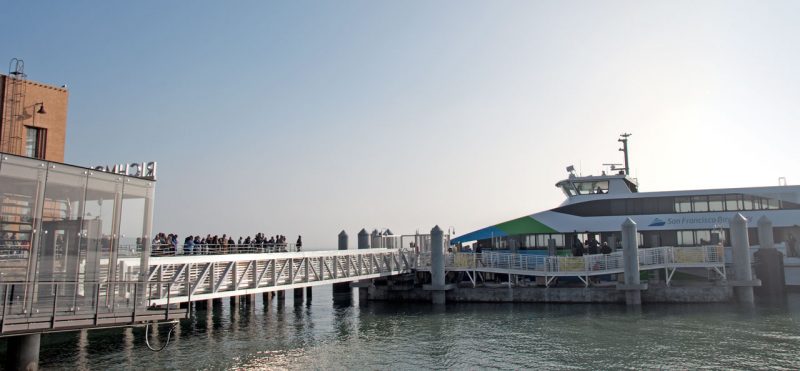
The boat’s name, Cetus, refers to a sea monster or whale in Greek mythology. The constellation Cetus occupies a region of the sky that contains other water-related constellations such as Aquarius, Pisces and Eridanus.

